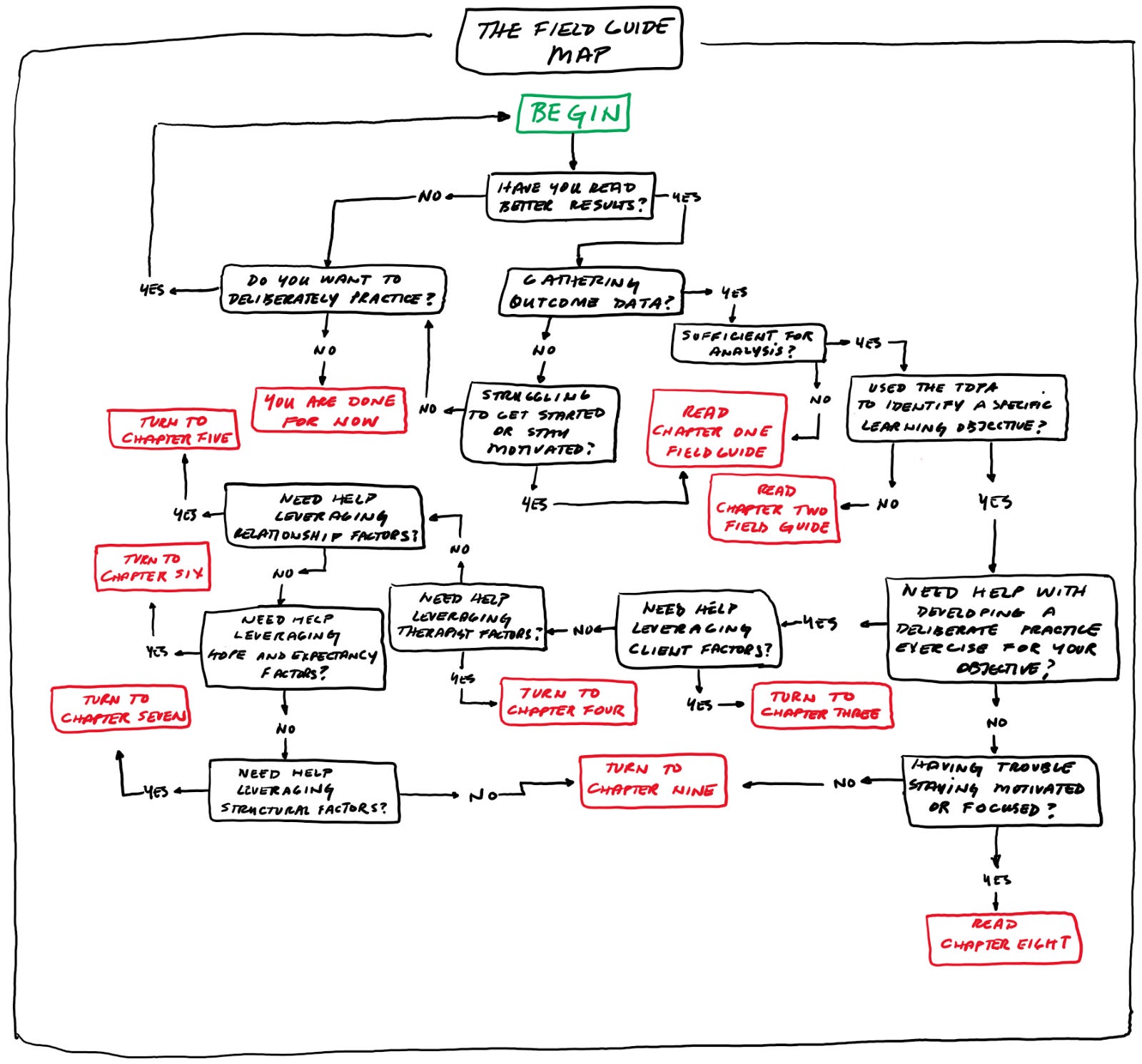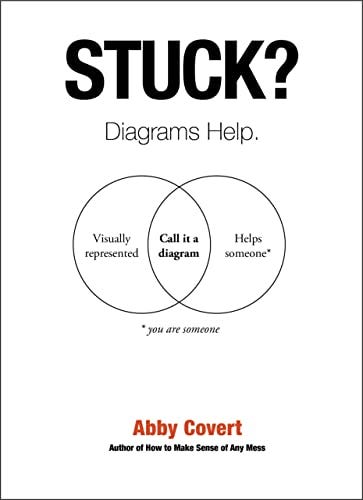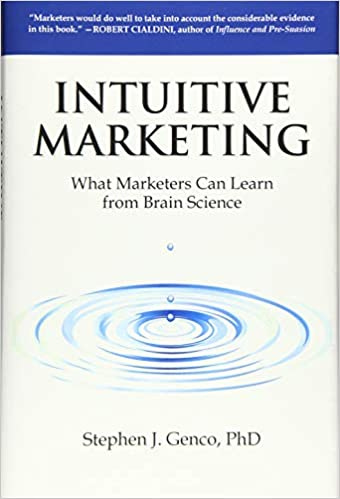Non-linear reading routes - Part 2
Three examples of reading routes in non-fiction books that help readers find their way around more effectively.
This newsletter can also be read on my website. You can click on many of the images below to see larger versions.
Non-fiction authors normally expect their readers to start at the beginning of the book and then read through to the end. In a previous blog post, I looked at eight different books which gave their readers options to pursue alternative non-linear routes.
Here are three more interesting examples of non-linear reading routes:
The Field Guide to Better Results: Evidence-Based Exercises to Improve Therapeutic Effectiveness edited by Scott D. Miller, Daryl Chow, Sam Malins and Mark A. Hubble
Stuck? Diagrams Help by Abby Covert
Intuitive Marketing: What Marketers Can Learn from Brain Science by Stephen Genco.
There are three different categories of reading routes that I have identified:
Catering to people with different interests and needs
Helping the development of skills and capabilities
Explaining the big picture.
The reading routes for the first two books The Field Guide to Better Results and Stuck? relate to the second category of helping the development of skills and capabilities while the reading route for Intuitive Marketing helps to explain the big picture.
The Field Guide to Better Results
The Field Guide to Better Results: Evidence-Based Exercises to Improve Therapeutic Effectiveness, edited by Scott D. Miller, Daryl Chow, Sam Malins and Mark A. Hubble, is a companion volume to their earlier book Better Results: Using Deliberate Practice to Improve Therapeutic Effectiveness. In addition to discussing more recent developments in the field, the second book focuses on helping readers to develop their skills by providing “explicit guidance in a readily accessible format about what to practice deliberately and how”.
Readers are warned not to follow a linear reading route but instead to pick chapters to read depending on their particular needs. As Miller and Hubble write in the Introduction, the book:
“is not designed to be read from cover to cover. Instead, it’s best thought of as a reference work, a resource to consult whenever a specific question, decision point, or challenge arises in one’s application of DP [deliberate practice]. Like any field guide, the section that has the most relevance depends on where the person is and what they need to know or be able to do now.”
To help readers choose the most relevant reading route, a map is provided in the Introduction in the form of an algorithm. The aim of the map is to “help identify “where you are” in your implementation of DP and point you to the next step”.
In addition to the map, each chapter starts with a Decision Point text box explaining who the chapter is suitable for.
There is also a Decision Point text box at the end of each chapter, which gives readers options for the next chapter to move on to.
There are also Field Guide Tips within chapters which direct readers to relevant sections in other chapters.
The authors have clearly thought deeply about how to design their book content for the differing needs and circumstances of their readers and I think they have developed an impressive solution.
Stuck?
In her excellent book Stuck? Diagrams Help, Abby Covert has written a practical guide to diagramming with an explanation of the different components of diagrams, how to ensure they do the job they are tasked with and how to decide on which of the different types of diagrams to use.
In a section of the Introduction titled Choose Your Own Adventure, Dear Reader, Abby Covert proposes routes for three types of readers:
beginners
experienced diagrammers
diagram nerds.
As well as providing the very clear diagram above, she provides the following description for each type of reader:
“If you are a beginner, I suggest you start at the beginning and read the first four chapters and practice making some diagrams on your own. If there are other people involved with or impacted by your diagrams, keep going because the stories in chapter 5 are going to be invaluable to using this skill with and for other people.
If/once you are a diagrammer, chapter 3 was designed for whenever you need a diagram critique. See how your latest diagram fares against my nine principles and 25 common diagram violations. Also, isn’t it tempting that the literature review and resource lists in the back are seemingly all that stand between the you of today and the diagram nerd inside you waiting to shine?
If you are a diagram nerd, welcome like-minded friend. I don’t know if what I have to teach in the first few chapters of this book will be all that impactful to your diagram practice, and yet I have to believe you might pick up something valuable for your practice, based solely on how much I learned about diagramming in writing this book. One thing that I know for certain is that the perspective on diagrams that Jenny Benevento takes in the literature review is one that hasn’t been taken in other places when it comes to the largesse of diagrammatic thought and historical gravitas. Also, the resources lists are fire.”
Intuitive Marketing
Intuitive Marketing: What Marketers Can Learn from Brain Science by Stephen Genco is an intriguing book that aims to replace the current marketing paradigm with a more effective one that has more respect for consumers and how they actually come to make decisions.
Genco has developed the device of Quick Read Boxes, which are key sentences put into a box with bold text and a grey background. He emphasizes that they are not ‘pull-outs’ or ‘call-outs’ – namely, text has already appeared elsewhere in the book- but instead text that is an integral part of the content.
As he explains at the beginning of the book, the boxes have important functions:
they highlight important ideas that should be attended to
they enable busy readers to get a quick understanding of the book as a whole without having to read through all the detail
they help linear readers to identify the key ideas as they go through the detail
they help people re-reading the book to revisit the main ideas quickly.
And below is an example from the Introduction showing how Stephen Genco has used the Quick Read Boxes in practice.
The approach that he takes is very similar to what architect Christopher Alexander did in his 1979 book The Timeless Way of Building, as I explained in my initial blog post on reading routes.
I prefer Genco’s approach as I think that his text boxes are easier to read than Alexander’s italicised text.
However I wish that both authors had collected their summary text together in one place in addition to having it interspersed throughout each book. This would have allowed readers to consume the key ideas without having to deal with the distraction of having turn over hundreds of pages to access this summary text.
Conclusion
Reading routes come in many shapes and sizes. Their look emerges from the learning objectives of the author and the structure of the content that readers need to be guided through.
As ever, please get in touch if you have any comments by replying to this email.
Francis










